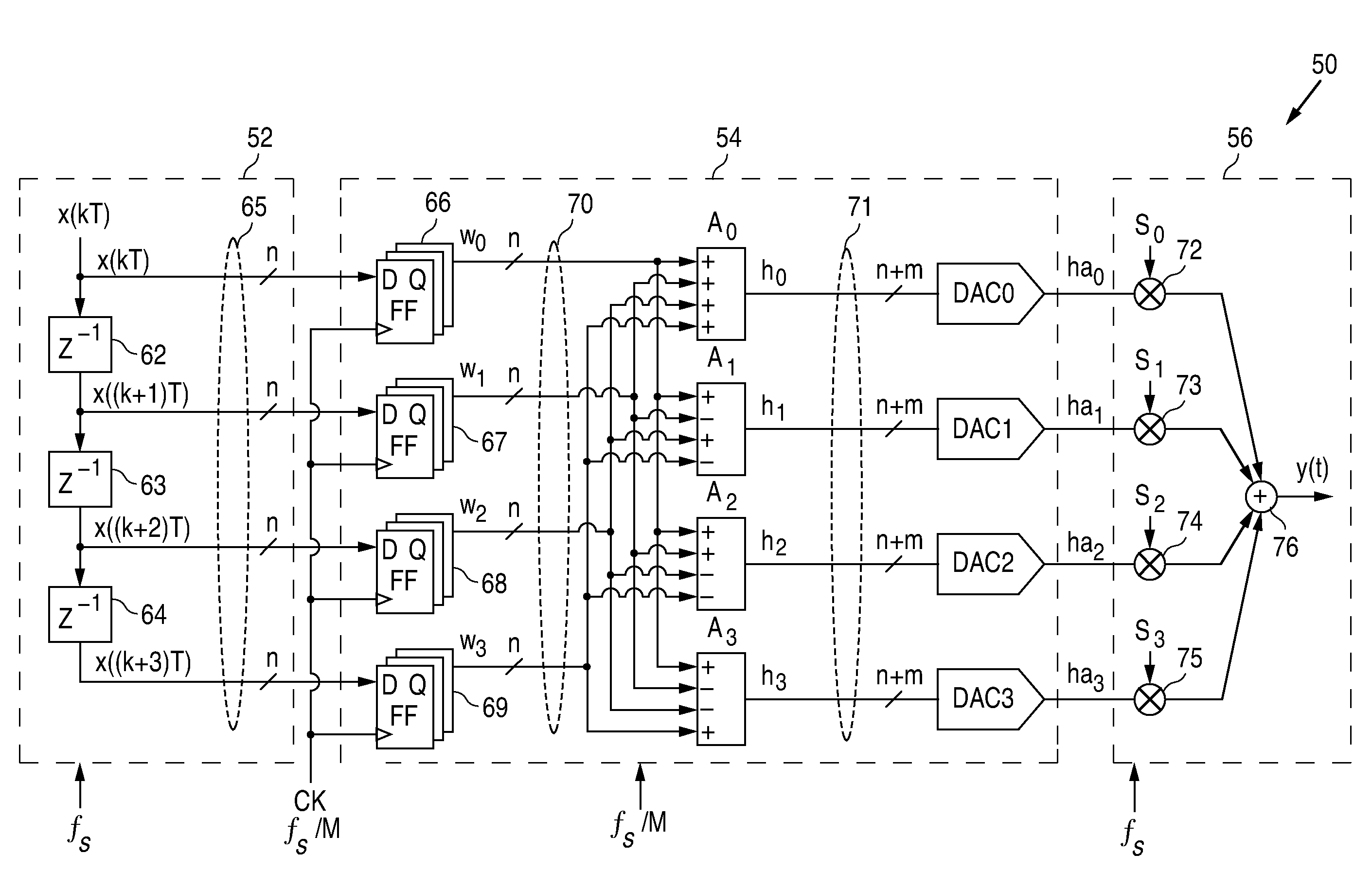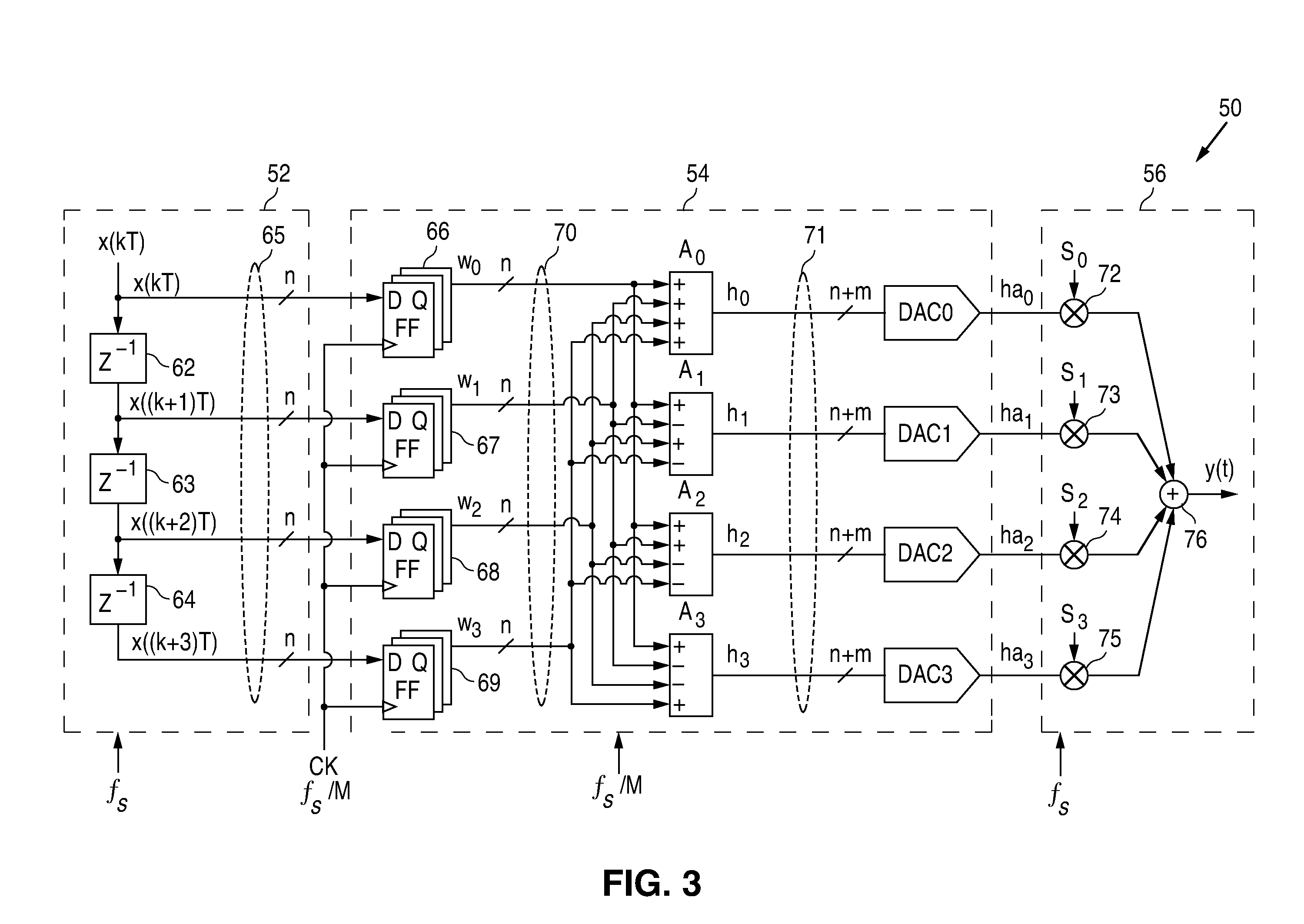Parallel digital-to-analog-converter
a digital-to-analog converter and parallel technology, applied in the field of digital-to-analog converters, can solve the problems of high power consumption of adc, high system complexity, and inability to use a single adc directly digitizing at the rate fsub>s ,
- Summary
- Abstract
- Description
- Claims
- Application Information
AI Technical Summary
Problems solved by technology
Method used
Image
Examples
Embodiment Construction
[0019]In accordance with the principles of the present invention, a parallel digital-to-analog converter (DAC) system uses an array of digital-to-analog converters (DACs) to performing parallel digital-to-analog conversion in a time-interleaved manner. The parallel DAC system includes input signal processing operations prior to the conversion operation to minimize errors and unwanted signal effects due to mismatches between the array of DACs. By using a parallel array of DACs, each DAC can operate at a slow rate of speed while the overall DAC system is still capable of providing fast conversion results. As thus configured, the parallel DAC system of the present invention is capable of fast conversion speed, accurate conversion result and low power consumption.
[0020]More specifically, in the parallel DAC system of the present invention, the digital input data stream is sampled at clock rate fs in a time-interleaved manner into an array of M data streams at a clock rate of fs / M. The M...
PUM
 Login to View More
Login to View More Abstract
Description
Claims
Application Information
 Login to View More
Login to View More - R&D
- Intellectual Property
- Life Sciences
- Materials
- Tech Scout
- Unparalleled Data Quality
- Higher Quality Content
- 60% Fewer Hallucinations
Browse by: Latest US Patents, China's latest patents, Technical Efficacy Thesaurus, Application Domain, Technology Topic, Popular Technical Reports.
© 2025 PatSnap. All rights reserved.Legal|Privacy policy|Modern Slavery Act Transparency Statement|Sitemap|About US| Contact US: help@patsnap.com



